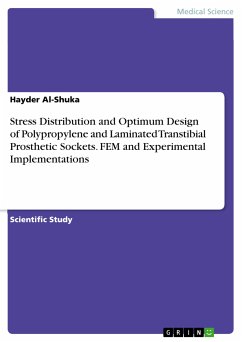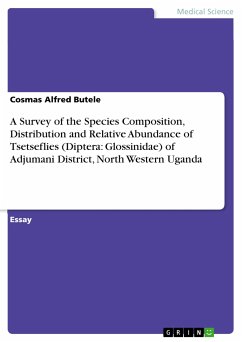
Stress Distribution and Optimum Design of Polypropylene and Laminated Transtibial Prosthetic Sockets. FEM and Experimental Implementations (eBook, PDF)

PAYBACK Punkte
0 °P sammeln!
Scientific Study from the year 2017 in the subject Medicine - Other, , language: English, abstract: This study presents analyses for below knee prosthetic socket of a human. Socket stress distribution is performed on three types of socket, polypropylene (5mm), polypropylene (3mm) and a standard laminate (3mm) sockets to determine the stresses path through the prosthetic socket during the gait cycle. It is found that heel strike phase is the critical phase. The stresses increase at the socket base while the maximum deflection is maximum at the patellar region of the socket. This work is achieve...
Scientific Study from the year 2017 in the subject Medicine - Other, , language: English, abstract: This study presents analyses for below knee prosthetic socket of a human. Socket stress distribution is performed on three types of socket, polypropylene (5mm), polypropylene (3mm) and a standard laminate (3mm) sockets to determine the stresses path through the prosthetic socket during the gait cycle. It is found that heel strike phase is the critical phase. The stresses increase at the socket base while the maximum deflection is maximum at the patellar region of the socket. This work is achieved by finite element program, ANSYS. The development of design specifications of a below the knee prosthetic socket is presented in this study for successful ambulation and comfort. Seven different design models are created by changing the socket wall thickness and the material. Polypropylene socket gives the best results with regard to the allowable deflection for the regions of the pressure relief areas of the stump. The effect of varying the modulus of elasticity on the polypropylene socket is considered in this study. Three models are analyzed with different tensile creep moduli during different periods. It is found that the polypropylene socket will enlarge in size with time. An experimental study is conducted to compare the strength of five prosthetic sockets made of different materials. Compression, three-point flexural and tensile tests are implemented by the Testometric machine. The laminate sockets have larger compressive stiffness than polypropylene while polypropylene has larger flexural stiffness than the tested laminates except for socket No.5.
Dieser Download kann aus rechtlichen Gründen nur mit Rechnungsadresse in A, B, BG, CY, CZ, D, DK, EW, E, FIN, F, GR, HR, H, IRL, I, LT, L, LR, M, NL, PL, P, R, S, SLO, SK ausgeliefert werden.













